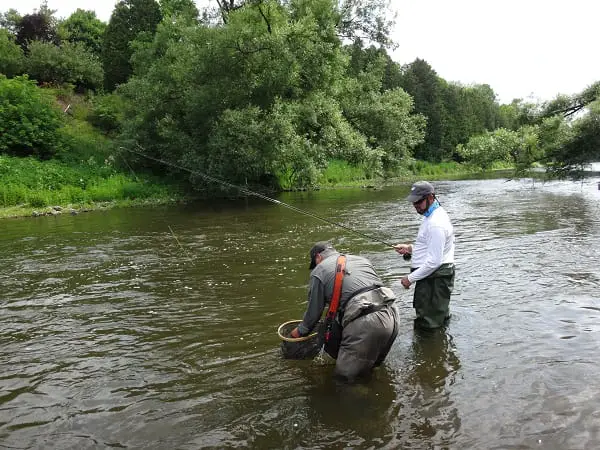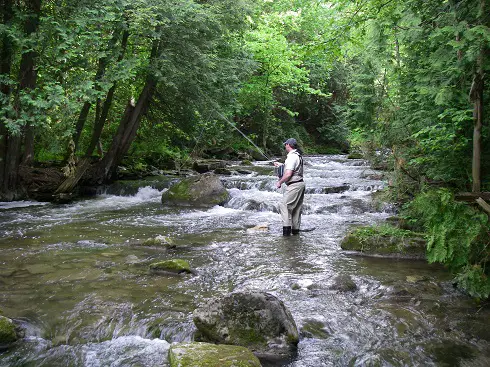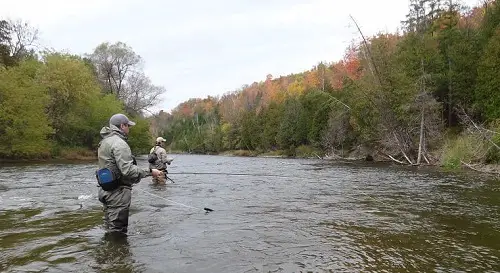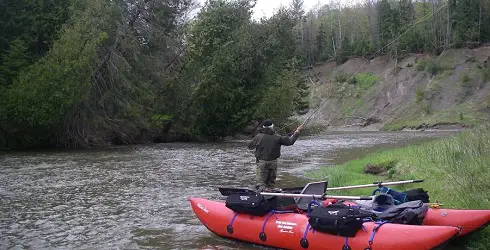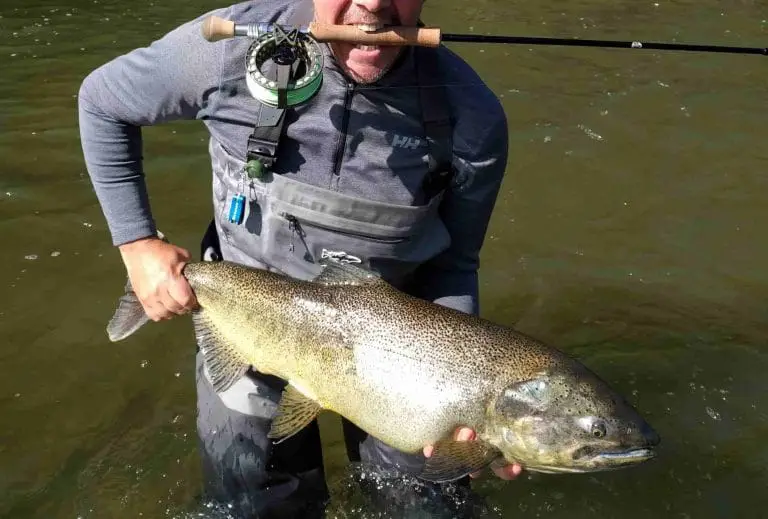Fly Fishing In The Winter: Tips From Experts
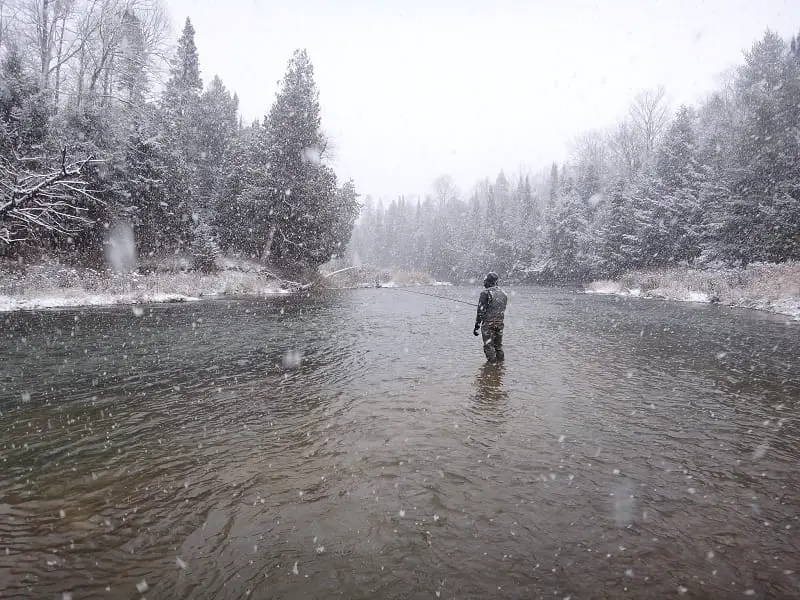
As a professional fly fishing guide who guides twelve months of the year, there are some things about fly fishing in the winter every angler should know.
1. Adapt To The Conditions
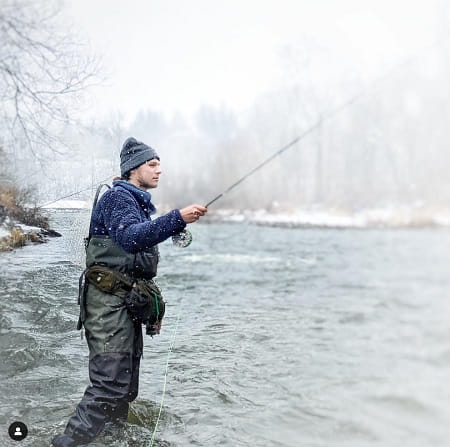
Fish will hold in different areas within the river throughout the year, and they feed a certain way based on water temperatures and their food sources.
When water temperatures drop to around 40°F or when ice starts forming on river edges, most fish move to winter locations and feed accordingly. This is when the bugs and baitfish they eat will also hunker down for the winter.
Target deeper runs and pools and stay out of the shallow and fast water as fish in the winter will not normally hold in these spots.
Fish tend to congregate in deep areas during winter, so once you figure out the right area, the fish are often concentrated there.
Knowing when to adapt to these conditions is crucial for winter fishing success.
2. Pros And Cons Of Fly Fishing In The Winter
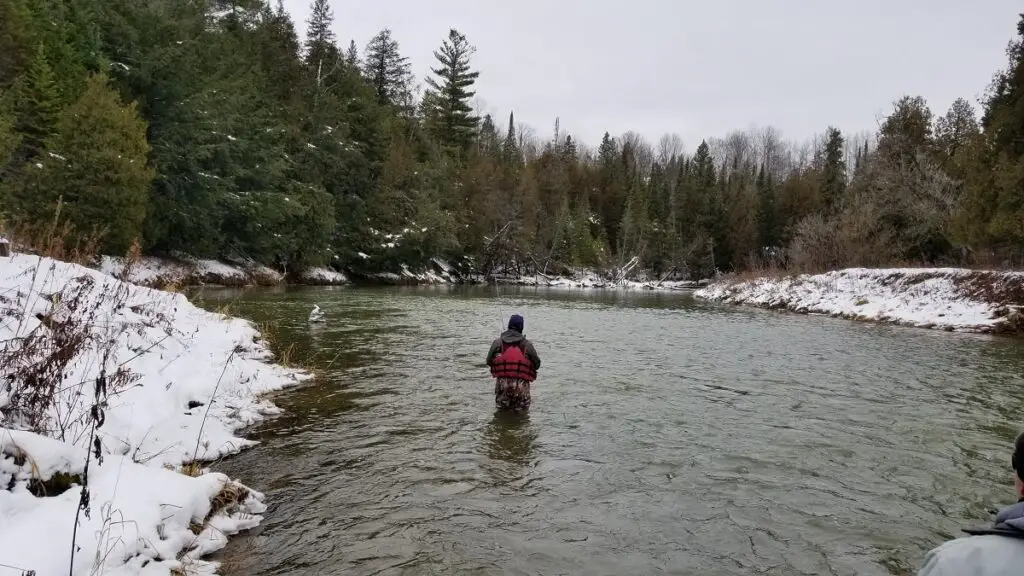
The benefits of fishing through the winter include fewer crowds, unpressured fish, and the chance to catch some of the biggest trout and steelhead of the year.
However, challenges like cold temperatures, shorter feeding windows, and fewer bugs can make fishing more challenging.
3. Strategies For Fly Fishing Success In The Winter
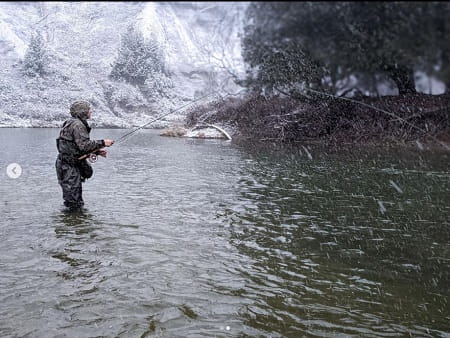
- Slow down and fish deeper.
- Use smaller, more natural fly patterns.
- Focus on deeper pools and slower river sections.
- Understand how water temperature affects fish behavior.
- Fish at different times, preferably late morning to early afternoon.
4. Gear For Winter Fishing
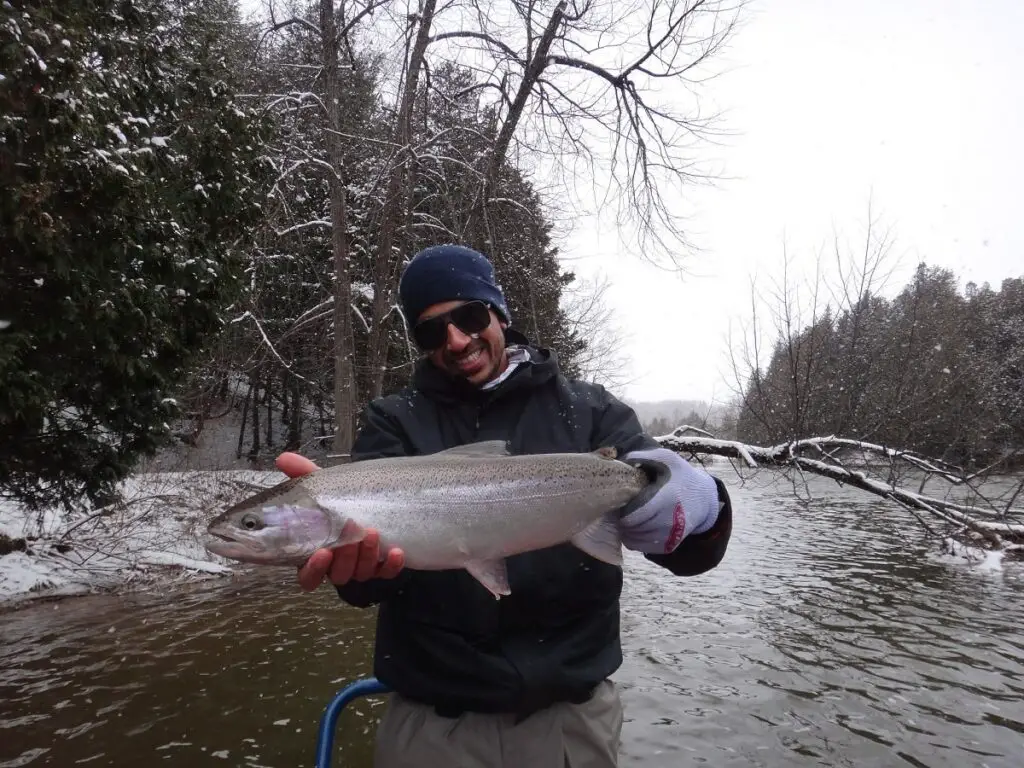
Rod and Reel: Any fly rod will work when fishing in very cold weather, but avoid excessive bending of the rod in extreme cold, and do not submerge the rod in the water, or it can freeze and cause more ice build up in the rod guides.
The fly reel should have an enclosed drag system to prevent ice buildup. It should also have a smooth drag system, and I recommend that you do not submerge the reel in below freezing temps.
Lines, Leaders, Tippets: Most multi-purpose fly lines will work. However, if you notice that your fly line seams stiff or is coiling, consider a specialty fly line designed for cold water. Lighter tippets (4X to 6X) are preferable as they sink faster and are less visible to fish, and fish are more lethargic, so they don’t usually fight as hard.
Keeping Warm
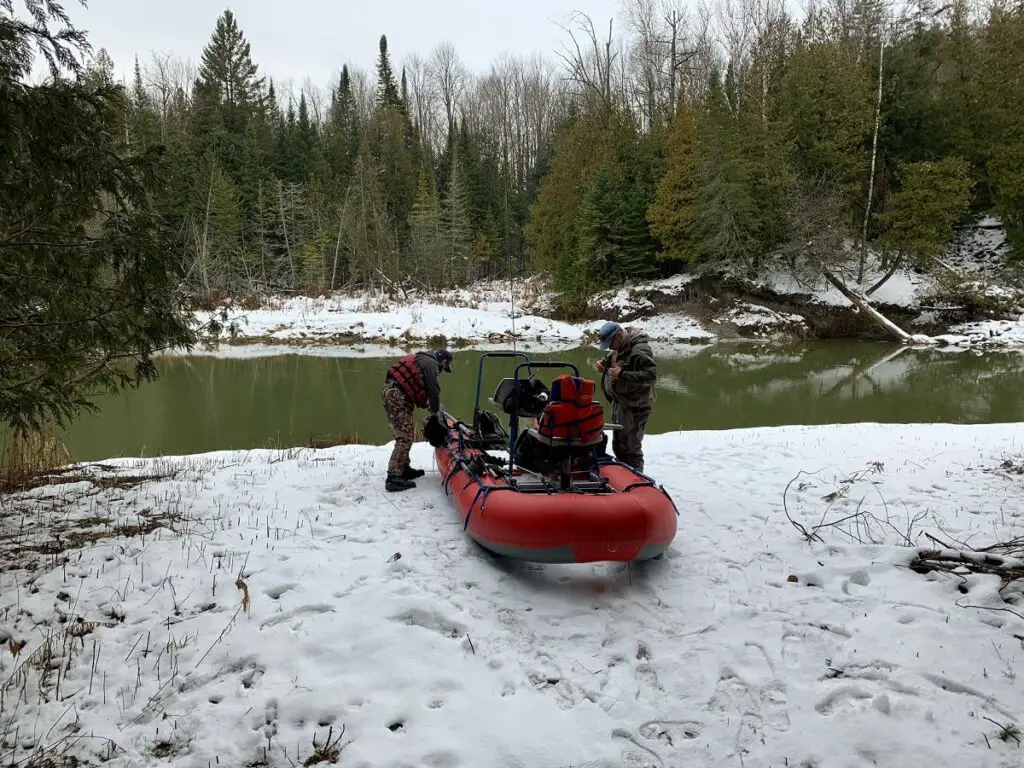
Cold feet and cold hands are the biggest problems anglers face during the winter.
Boot foot waders or neoprene stocking foot waders are recommended for warmth. Dressing appropriately is key to staying comfortable.
Bring an extra pair of gloves in case one glove gets wet.
I use electric heated insoles for my feet. They are the best device I have found to keep my feet warm inside my wader. Be sure they are inside your wader, not outside…
Disposable hand warmers are also a great tool to keep your hands warm. See my article How To Stay Warm When Winter River Fishing.
Guide Tip: Don’t let yourself sweat. Once wet, it’s hard to stay warm and comfortable.
5. Methods For Winter Fly Fishing

Winter is the time for nymphing or streamer fishing. Fish are usually in deeper spots and are lethargic, so slow-moving presentations will often produce the most fish.
Streamers can also work by fishing them slower.
More rare is dry fly fishing, but in some parts of the country, you might have midge hatches.
Fly Selection
In the winter, I tend to do better on smaller flies. I may use bigger and brighter flies if the smaller natural colored flies are not working.
Focus on nymphs and streamers that imitate natural winter insects. Midges, Pheasant Tail Nymphs, Hares Ear Nymphs, and Zebra Midges are good choices.
Egg patterns can also be very good in the winter.
Water Temperature Is Key

This is where my experience shines. I have noticed that the actual temperature of the water does not matter much.
Instead, what I have determined is that if the water temperature is dropping, the fish will not be as active and will be harder to catch.
If the water temperature is stable and has been stable for a few hours, the fishing can be good, but it can also be slow.
If the water temperatures are rising, the fish can become active and feed heavily. Even a one or two-degree temperature increase can make fish active.
Sunny days are best in the winter,
Winter Safety
Safety and Regulations: Always prioritize safety. Stay off the ice over the water. Be careful of icy paths. I wear cleated boots in the winter and avoid felt bottom boots.
Also, Be aware of local fishing regulations since winter fishing may not permitted in some areas.
Dress appropriately to avoid hypothermia, and always let someone know where you will be fishing.
I also carry a lighter in a zip-lock bag in case I need to build a fire.
Personal Experience and Expertise
In my 22 years as a guide, I’ve guided over 3000 clients, adapting to various conditions and perfecting techniques for winter fishing. My experience has taught me that while winter fishing can be challenging, it’s also rewarding, offering unique opportunities to catch magnificent fish in serene, crowd-free environments.
Remember, success in winter fly fishing lies in understanding and adapting to the unique challenges of the season. With the right approach, gear, and techniques, it can be an incredibly fruitful and enjoyable experience.
Graham

